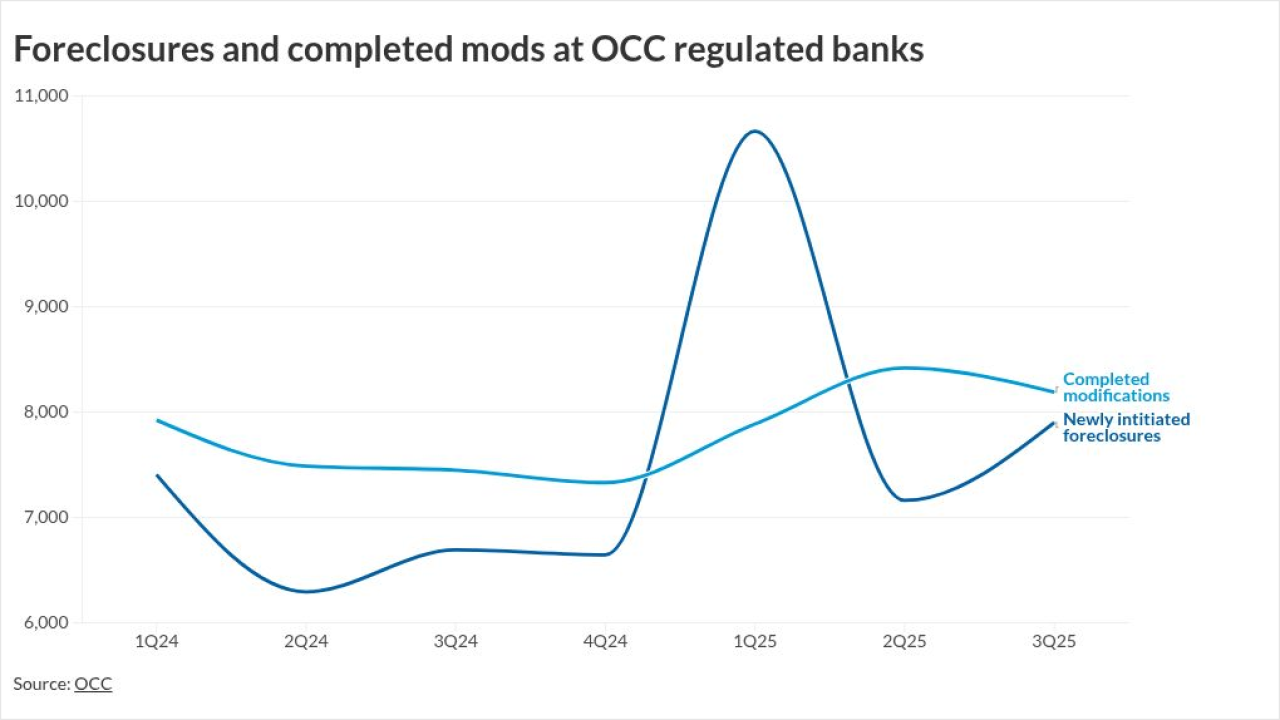
The perceived wisdom that the pre-2008 mortgage market was an era of automatic "pulse" loans made to anyone with a heartbeat and "fog-a-mirror finance" may need some rethinking, analyses of Home Mortgage Disclosure Act data show.
In fact, in the biggest racial category, loans to whites, denials were an even larger percentage of the total a decade ago than they are now.
There is no doubt that pre-2008, the number and the dollar volume of mortgages were much higher than they are now. But a look at a 10-year study of originations, denials and "fallout" by Maurice Jourdain-Earl, managing director of Arlington, Va.-based ComplianceTech shows that whites, for instance, were denied at an 18.7% rate in 2004 — higher than the 17.3% rate shown in 2013's supposedly tighter underwriting era.
Jourdain-Earl, who was studying these numbers to compare them by race/ethnic groups (he found origination percentages to whites have increased steadily in the decade, especially loans bought by Fannie Mae and Freddie Mac), counted only mortgages and applications where the race of the applicant was clear. So he factored out the "multi-race," "unknown" and "N/A" categories.
And a National Mortgage News analysis found quite comparable findings to ComplianceTech's when all mortgages were tallied from one pre-crash year, 2006.
Black denials were the highest for all racial groups, but were constant at 31.9% in both 2004 and 2013, according to ComplianceTech. Denials were lower 10 years ago for Hispanics and Asians — but not by very much, less than 100 basis points for Asians and less than 200 basis points for Hispanics.
Jourdain-Earl also compared "fallout" rates, where an application was started but never completed, due to several reasons (such as incomplete or withdrawn), with very similar results. However, the fallout category may contain multiple applications made by the same person, who didn't complete the others after another lender decided to lend to him or her.
Denials actually were the highest in the tumultuous years of 2007 and 2008, when first the mortgage market and then the general economy went sour. Denials for the four largest racial categories (Native Americans and Native Hawaiians aren't broken out) have all declined significantly since then.
When considering the share of overall origination volume in each racial group, conventional purchase loans (meaning government-sponsored enterprises and jumbos) to whites increased from 74% in 2004 to 82.5% in 2013, the ComplianceTech analysis showed. Asians were the only minority group that increased its share of overall conventional purchase originations (the government considers Hispanic an ethnicity rather than a race, but they are usually considered minorities). The story was much the same for conventional refinancings.
Minorities got a higher percentage of government purchase mortgages (Federal Housing Administration, Department of Veterans Affairs and Rural Housing Service) than conventional loans during the decade. The white share of these loans also increased during this period, to 72% from 69%. The Asian share in this category was also up, while Hispanics stayed flat. Government refinance loans approvals to whites increased to 74%, from 64%.
Jourdain-Earl doesn't have a clear answer as to why the white share moved up so dramatically in GSE lending. "I have been scratching my head for some time now trying to understand the practical dynamic," he said, adding he is doing a study on the data now, which he hopes to finish early in 2015. "The reality is the data clearly show a skewing of the distribution (of loans)."
How to explain the skewing? Jourdain-Earl has more questions than answers. "Is it the route of least resistance? Is it the Realtor? I really don't know. Are borrowers self-selecting government loans? Is it a function of net worth? Of income? I have not come to a conclusion. I put it out there as a question."
He does have an opinion, however, on the heated current debate on the role of the GSEs in minority lending. He doesn't blame the racial disparity on the secondary agencies, but rather their lender customers.
"Fannie and Freddie are not the problem. It's the lending industry that's the problem," he said.
Lenders don't originate the type of loans that Fannie and Freddie buy to people of color and instead, choose to originate more government loans than conventional loans to blacks and Hispanics, leaving fewer loans in the pool for the GSEs, Jourdain-Earl maintains.
"The real question is, are Fannie and Freddie doing enough to ensure that their loan programs are being evenly distributed? Jourdain-Earl asked. "Are they doing enough to monitor the lenders as to whether steering occurs?"
The proportion of government loans to minorities may have increased because subprime loans fell out of favor, he added. Prior to 2008, practically half of all loans to minorities were subprime, he said. Since then, government lending has picked up the slack for minority borrowers.
"Could the borrower who received a subprime loan have qualified for a prime loan? Or could those who got government loans have qualified for conventional?" he asked.
One effect of the loan skewing has been to limit minority participation in the special mortgage programs the federal government created to shore up mortgage markets after the downturn.
"The HARP program was limited to Fannie and Freddie loans, so if Fannie and Freddie have bought fewer loans from blacks and Hispanics, [then] blacks and Hispanics had fewer opportunities to participate."
Mark Fogarty, Editor at Large of National Mortgage News, brings more than 30 years of experience to his analyses of the mortgage market.





